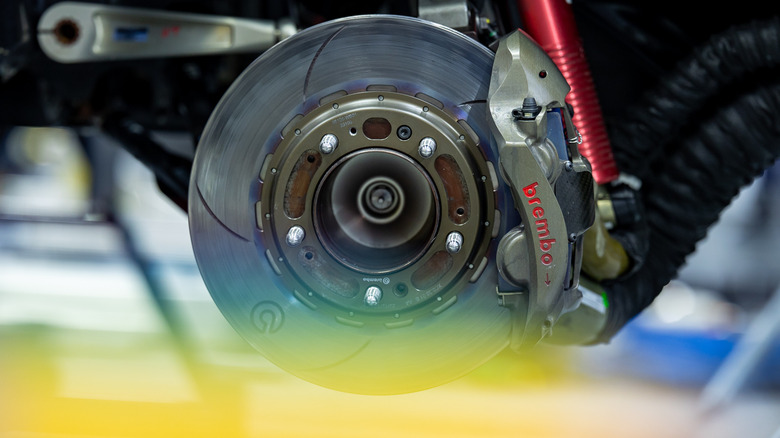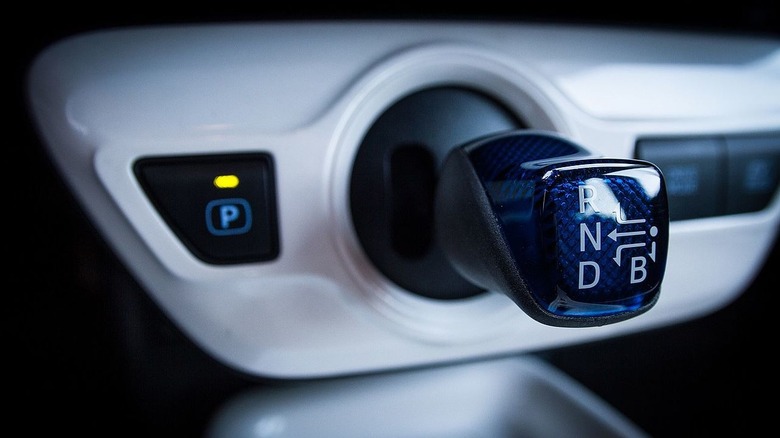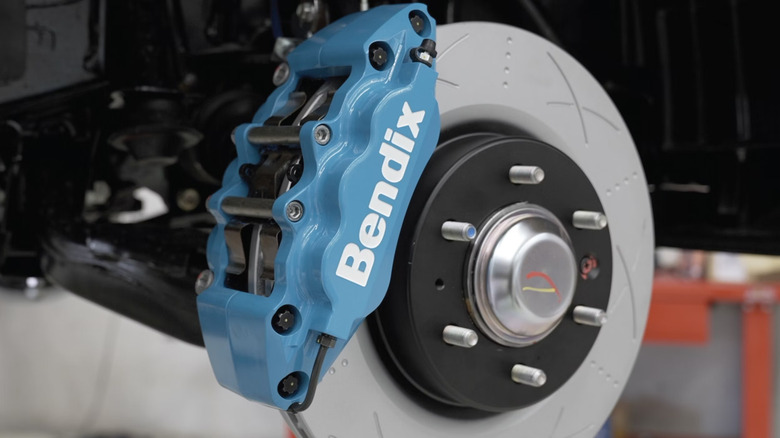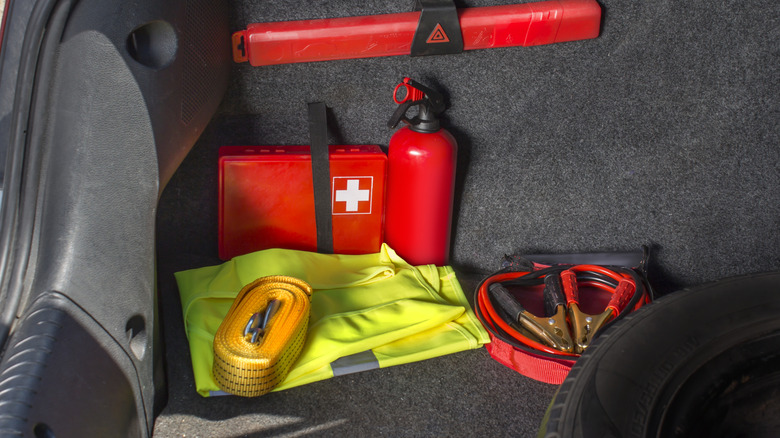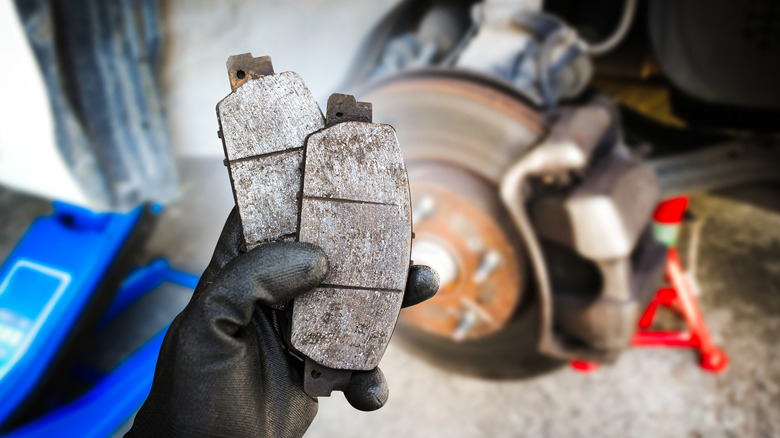5 Mistakes You Need To Stop Making To Protect Your Car's Brakes
You might not think much about your vehicle's brakes, other than to notice when they begin to stop, well, stopping your car. Or, you might notice that they start to squeak, feel loose, or develop some other issue earlier than expected. Brakes are generally good for about 40,000 miles on average, though your mileage can, of course, vary. How often you'll need to replace your brake pads depends on the type of vehicle, how often you drive, where you drive, and, among other things, how fast you regularly drive.
If you're not getting those kinds of miles from your brakes, consider that changing your driving and braking habits could extend the useful life of your next set of brake pads and rotors. While you might be making some mistakes while changing your brake pads, these are the things to think about to preserve your brakes for as long as possible between service appointments.
Not using engine braking
When you're sliding down the side of a mountain, standing on the brakes is not the best move. Although there are plenty of scenarios where braking the normal way is optimal, engine braking has a time and place. If you drive a vehicle with a manual transmission, you probably do this anyway. Downshifting helps slow you down by way of the transmission rather than the braking system.
If your vehicle has an automatic transmission, you may still be able to use engine braking by downshifting or, in newer vehicles, selecting the engine brake setting. For example, my Toyota Prius hybrid has a "B" on the gear selector, which stands for engine braking mode. Although hybrids have unique regenerative braking systems, there might be times when you want to activate engine braking (like those steep downhill drives), and B Mode is a solution. Toyota also suggests that drivers can use B while "coasting to a stop." Whether you drive an automatic or manual transmission vehicle, not using engine braking could mean you're placing more stress on your brakes than necessary.
Pumping the brakes
The idea of pumping the brakes is one myth you need to stop believing. You might think that pumping them makes for a more efficient stop because it's a gradual application of pressure in short bursts. However, you don't need to pump your brakes for a more effective stop.
Most modern vehicles have an Anti-Lock Braking System (ABS), and that technology eliminates the need for pumping the brakes. If your vehicle is older, you might need to check whether it has ABS before changing your driving habits; figuring out how to tell if your car has ABS takes a close look and a bit of background knowledge.
If you do find that your car has ABS, stop pumping those brakes. ABS actually mimics pumping the brakes but at a speed humans can't match. In some vehicles, quickly pressing and then releasing the brakes multiple times will also impact your car's settings. For example, if I brake multiple times too quickly, my Prius sometimes flashes a traction control light warning. Read your user manual for any cautions about the braking system (or traction), and then let the ABS do its job.
Sudden stops
Sudden stops are dangerous for a few reasons, but this is another mistake you need to stop making to protect your car's brakes. Stopping suddenly could cause an accident, but it can also place undue wear and tear on your car's braking system.
Braking more slowly could help your brakes last longer because it means less wear over time. Like any other vehicle system, if you use it more, it will need repair more often. Avoiding sudden stops might start with giving the vehicle ahead of you plenty of space; the three-second rule is a good starting point, and more space is always better. Giving yourself a few seconds of reaction time could help you avoid sudden braking when the car in front of you does something unexpected.
You can also learn to eyeball your brakes without removing the wheel to determine whether it's time for service or if you have a few more miles left. After all, maintenance is key for safety and performance.
Keeping junk in the trunk
Have you ever planned to drop something off somewhere but instead drove around with it in your car for weeks ... or longer? If you generally keep a bunch of junk in the trunk — beyond the essentials like an emergency kit — think twice about that habit. According to the U.S. Department of Energy, a heavier payload causes you to lose out on gas mileage. Even 100 pounds could reduce your miles-per-gallon average by about 2%.
More weight in the vehicle also means that your car is harder to stop once it's moving. While there may not be an exact equation to determine that more stuff in the trunk equals earlier brake service, it's logical to guess that putting more weight behind each stop or slow-down will eventually take a toll. Keep in mind that a heavier vehicle also coasts faster, so you'll be applying the brakes more often to slow down if there's more weight contributing to the downhill motion.
Not breaking in your brakes
You might think that after a brake job — particularly a professional one — you can drive off and not think twice about your brakes until the next service appointment. However, professionals generally agree that bedding your brakes is necessary, even though it doesn't seem like a common service offered at most service centers.
The process of bedding brakes is basically breaking them in with a series of controlled stops from specific speeds. By applying the brakes in a range of medium to aggressive stops, you will, ideally, transfer brake pad material onto the rotor. This would, theoretically, happen anyway as you drive, but doing controlled stops increases the odds that the wear starts out even.
Before bedding your brakes, you'll want to consider the different types of brake pads and figure out which ones you currently have, or whether you want to switch at your next service appointment (or DIY brake job). If you have your brakes professionally serviced, ask your mechanic whether bedding is part of the service, along with things like replacing brake fluid and checking the rotors (and changing them if needed).
